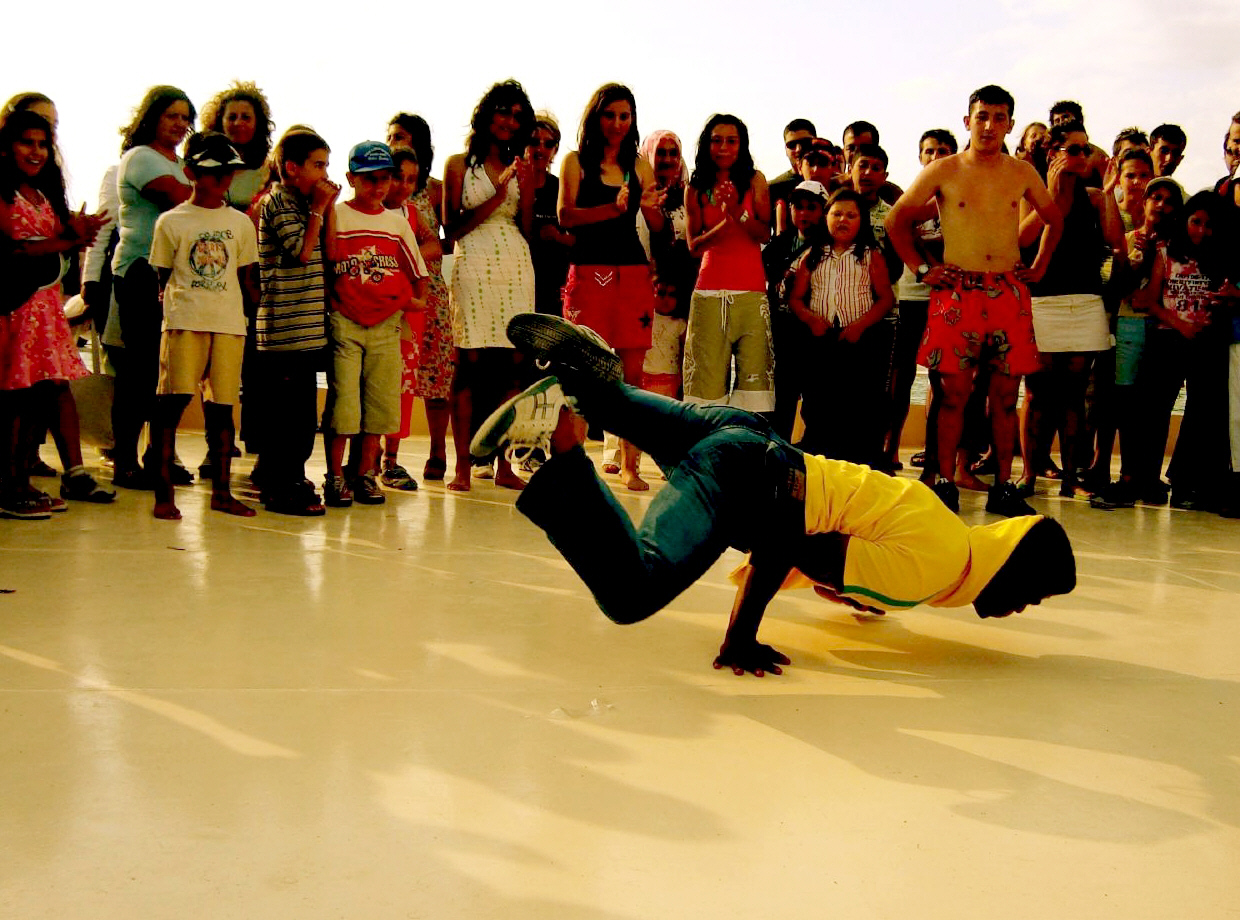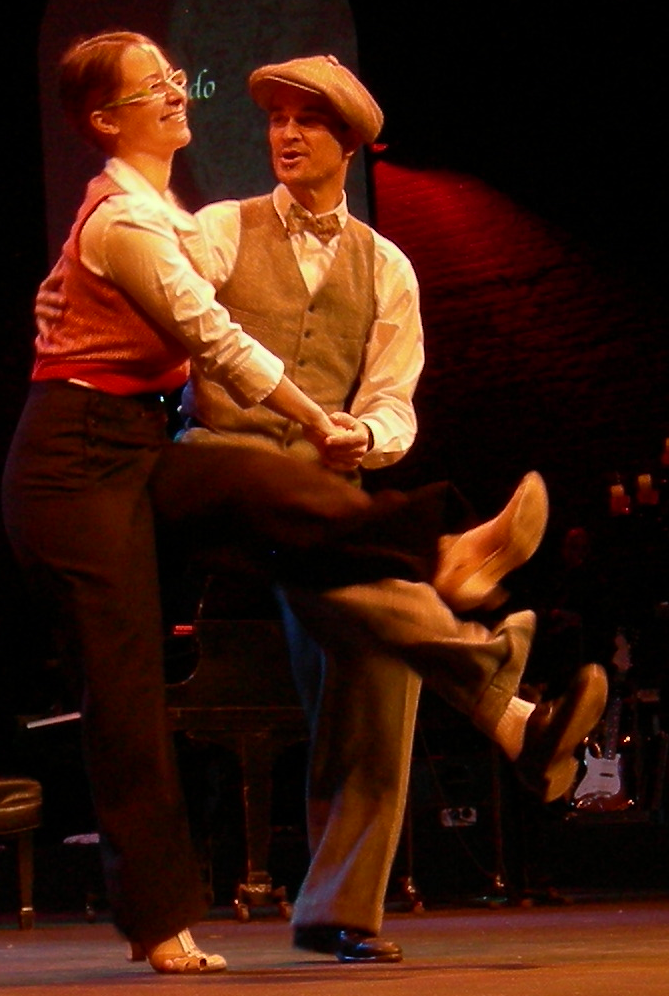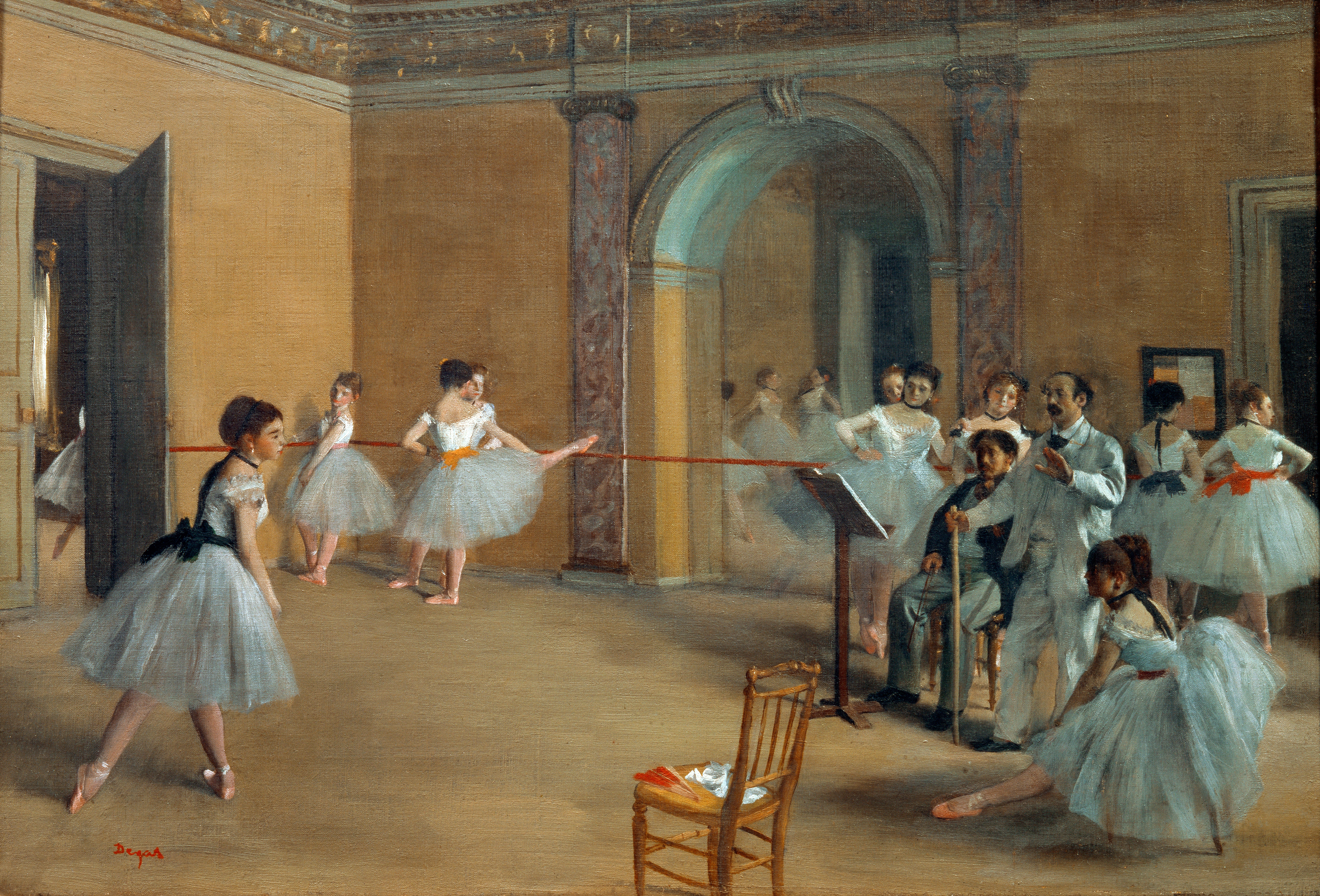|
Choreograph
Choreography is the art or practice of designing sequences of movements of physical bodies (or their depictions) in which motion or form or both are specified. ''Choreography'' may also refer to the design itself. A choreographer is one who creates choreographies by practising the art of choreography, a process known as choreographing. It most commonly refers to dance choreography. In dance, ''choreography'' may also refer to the design itself, which is sometimes expressed by means of dance notation. Dance choreography is sometimes called ''dance composition''. Aspects of dance choreography include the compositional use of organic unity, rhythmic or non-rhythmic articulation, theme and variation, and repetition. The choreographic process may employ improvisation for the purpose of developing innovative movement ideas. In general, choreography is used to design dances that are intended to be performed as concert dance. The art of choreography involves the specification of ... [...More Info...] [...Related Items...] OR: [Wikipedia] [Google] [Baidu] |
George Balanchine
George Balanchine (; Various sources: * * * * born Georgiy Melitonovich Balanchivadze; ka, გიორგი მელიტონის ძე ბალანჩივაძე; January 22, 1904 (O. S. January 9) – April 30, 1983) was an ethnic Georgian American ballet choreographer who was one of the most influential 20th-century choreographers. Styled as the father of American ballet, he co-founded the New York City Ballet and remained its artistic director for more than 35 years.Joseph Horowitz (2008)''Artists in Exile: How Refugees from 20th-century War and Revolution Transformed the American Performing Arts.''HarperCollins. His choreography is characterized by plotless ballets with minimal costume and décor, performed to classical and neoclassical music. Born in St. Petersburg, Balanchine took the standards and technique from his time at the Imperial Ballet School and fused it with other schools of movement that he had adopted during his tenure on Broadway and ... [...More Info...] [...Related Items...] OR: [Wikipedia] [Google] [Baidu] |
Hip Hop Dance
Hip hop dance is a range of street dance styles primarily performed to hip hop music or that have evolved as part of hip hop culture. It is influenced by a wide range of styles that were created in the 1970s and made popular by dance crews in the United States. The television show ''Soul Train'' and the 1980s films ''Breakin''', ''Beat Street'', and ''Wild Style'' showcased these crews and dance styles in their early stages; therefore, giving hip-hop dance mainstream exposure. The dance industry responded with a commercial, studio-based version of hip-hop—sometimes called "new style"—and a hip-hop influenced style of jazz dance called "jazz-funk". Classically trained dancers developed these studio styles in order to create choreography from the hip-hop dances that were performed on the street. Because of this development, hip-hop dance is practiced in both dance studios and outdoor spaces. The commercialization of hip-hop dance continued into the 1990s and 2000s with the p ... [...More Info...] [...Related Items...] OR: [Wikipedia] [Google] [Baidu] |
K Pop
K-pop (), short for Korean popular music, is a form of popular music originating in South Korea as part of South Korean culture. It includes styles and genres from around the world, such as pop, hip hop, R&B, experimental, rock, jazz, gospel, reggae, electronic dance, folk, country, disco, and classical on top of its traditional Korean music roots. The term "K-pop" became popular in the 2000s, especially in the international context. The Korean term for domestic pop music is ''gayo'' (), which is still widely used within South Korea. While "K-pop" can refer to all popular music or pop music from South Korea, it is colloquially often used in a ''narrower'' sense for any Korean music and artists associated with the entertainment and idol industry in the country, regardless of the genre. The more modern form of the genre, originally termed "rap dance", emerged with the formation of the hip hop boy band Seo Taiji and Boys, in 1992. Their experimentation with different ... [...More Info...] [...Related Items...] OR: [Wikipedia] [Google] [Baidu] |
Ballet
Ballet () is a type of performance dance that originated during the Italian Renaissance in the fifteenth century and later developed into a concert dance form in France and Russia. It has since become a widespread and highly technical form of dance with its own vocabulary. Ballet has been influential globally and has defined the foundational techniques which are used in many other dance genres and cultures. Various schools around the world have incorporated their own cultures. As a result, ballet has evolved in distinct ways. A ''ballet'' as a unified work comprises the choreography and music for a ballet production. Ballets are choreographed and performed by trained ballet dancers. Traditional classical ballets are usually performed with classical music accompaniment and use elaborate costumes and staging, whereas modern ballets are often performed in simple costumes and without elaborate sets or scenery. Etymology Ballet is a French word which had its origin in Italian ... [...More Info...] [...Related Items...] OR: [Wikipedia] [Google] [Baidu] |
Hermes Pan (choreographer)
Hermes Pan (born Hermes Joseph Panagiotopoulos, December 10, 1909 – September 19, 1990) was an American dancer and choreographer, principally remembered as Fred Astaire's choreographic collaborator on the famous 1930s movie musicals starring Astaire and Ginger Rogers. He worked on nearly two dozen films and TV shows with Astaire. He won both an Oscar and an Emmy for his dance direction. Born in Memphis, Tennessee, as the son of a Greek immigrant and an American woman from the South, Pan moved to New York City with his family when he was 14. He started dancing in amateur productions and speakeasies. He was first paid to dance at age 19 and worked in several Broadway productions. In 1930 he moved to California, where he met Astaire in 1933 and began working with him; he choreographed 89 films. Early life Pan was born Hermes Joseph Panagiotopoulos in 1909 in Memphis, Tennessee, to Pantelis Panagiotopoulos, a Greek immigrant,John Franceschina, ''Hermes Pan: The Man Who Danced wi ... [...More Info...] [...Related Items...] OR: [Wikipedia] [Google] [Baidu] |
Jazz Dance
Jazz dance is a performance dance and style that arose in the United States in the mid 20th century. Jazz dance may allude to vernacular jazz about to Broadway or dramatic jazz. The two types expand on African American vernacular styles of dance that arose with jazz music. Vernacular jazz dance incorporates ragtime moves, Charleston, Lindy hop and mambo. Popular vernacular jazz dance performers include The Whitman Sisters, Florence Mills, Ethel Waters, Al Minns and Leon James, Frankie Manning, Norma Miller, Dawn Hampton, and Katherine Dunham. Dramatic jazz dance performed on the show stage was promoted by Jack Cole, Bob Fosse, Eugene Louis Faccuito, and Gus Giordano. The term 'jazz dance' has been used in ways that have little or nothing to do with jazz music. Since the 1940s, Hollywood movies and Broadway shows have used the term to describe the choreographies of Bob Fosse and Jerome Robbins. In the 1990s, colleges and universities applied to the term to classes offered ... [...More Info...] [...Related Items...] OR: [Wikipedia] [Google] [Baidu] |
Contemporary Dance
Contemporary dance is a genre of dance performance that developed during the mid-twentieth century and has since grown to become one of the dominant genres for formally trained dancers throughout the world, with particularly strong popularity in the U.S. and Europe. Although originally informed by and borrowing from classical, modern, and jazz styles, it has come to incorporate elements from many styles of dance. Due to its technical similarities, it is often perceived to be closely related to modern dance, ballet, and other classical concert dance styles. In terms of the focus of its technique, contemporary dance tends to combine the strong but controlled legwork of ballet with modern that stresses on torso. It also employs contract-release, floor work, fall and recovery, and improvisation characteristics of modern dance. Unpredictable changes in rhythm, speed, and direction are often used, as well. Additionally, contemporary dance sometimes incorporates elements of non-wester ... [...More Info...] [...Related Items...] OR: [Wikipedia] [Google] [Baidu] |
Dance Notation
Dance notation is the symbolic representation of human dance movement and form, using methods such as graphic symbols and figures, path mapping, numerical systems, and letter and word notations. Several dance notation systems have been invented, many of which are designed to document specific types of dance while others have been developed with capturing the broader spectrum of human movement potential. A ''dance score'' is a recorded dance notation that describes a particular dance. Usage The primary uses of dance notation are historical dance preservation through documentation and analysis (e.g., in ethnochoreology) or reconstruction of choreography, dance forms, and technical exercises. Dance notation systems also allow for dance works to be documented and therefore potentially copyrighted. Two popular dance notation systems used in Western culture are Labanotation (also known as Kinetography Laban) and Benesh Movement Notation. Others include Eshkol-Wachman Movement ... [...More Info...] [...Related Items...] OR: [Wikipedia] [Google] [Baidu] |
On Your Toes
''On Your Toes'' (1936) is a musical with a book by Richard Rodgers, George Abbott, and Lorenz Hart, music by Rodgers, and lyrics by Hart. It was adapted into a film in 1939. While teaching music at Knickerbocker University, Phil "Junior" Dolan III tries to persuade Sergei Alexandrovich, the director of the Russian Ballet, to stage the jazz ballet '' Slaughter on Tenth Avenue''. After becoming involved with the company's prima ballerina Vera Barnova, Junior is forced to assume the male lead in ''Slaughter''. Trouble ensues when he becomes the target of two thugs hired by Vera's lover and dance partner to kill him. ''On Your Toes'' marked the first time a Broadway musical made dramatic use of classical dance and incorporated jazz into its score. Films about ballet Background ''On Your Toes'' originally was conceived as a film, and as a vehicle for Fred Astaire. His refusal of the part, because he thought that the role clashed with his debonair image developed in his contempora ... [...More Info...] [...Related Items...] OR: [Wikipedia] [Google] [Baidu] |
Classical Ballet
Classical ballet is any of the traditional, formal styles of ballet that exclusively employ classical ballet technique. It is known for its aesthetics and rigorous technique (such as pointe work, turnout of the legs, and high extensions), its flowing, precise movements, and its ethereal qualities. There are stylistic variations related to an area or origin, which are denoted by classifications such as Russian ballet, French ballet, British ballet and Italian ballet. For example, Russian ballet features high extensions and dynamic turns, whereas Italian ballet tends to be more grounded, with a focus on fast, intricate footwork. Many of the stylistic variations are associated with specific training methods that have been named after their originators. Despite these variations, the performance and vocabulary of classical ballet are largely consistent throughout the world. History Ballet originated in the Italian Renaissance courts and was brought to France by Catherine d ... [...More Info...] [...Related Items...] OR: [Wikipedia] [Google] [Baidu] |
Improvisation
Improvisation is the activity of making or doing something not planned beforehand, using whatever can be found. Improvisation in the performing arts is a very spontaneous performance without specific or scripted preparation. The skills of improvisation can apply to many different faculties, across all artistic, scientific, physical, cognitive, academic, and non-academic disciplines; see Applied improvisation. Improvisation also exists outside the arts. Improvisation in engineering is to solve a problem with the tools and materials immediately at hand. Improvised weapons are often used by guerrillas, insurgents and criminals. Engineering Improvisation in engineering is to solve a problem with the tools and materials immediately at hand. Examples of such improvisation was the re-engineering of carbon dioxide scrubbers with the materials on hand during the Apollo 13 space mission, or the use of a knife in place of a screwdriver to turn a screw. Engineering improvisations may ... [...More Info...] [...Related Items...] OR: [Wikipedia] [Google] [Baidu] |
Concert Dance
Concert dance (also known as performance dance or theatre dance in the United Kingdom) is dance performed for an audience. It is frequently performed in a theatre setting, though this is not a requirement, and it is usually choreographed and performed to set music. By contrast, social dance and participation dance may be performed without an audience and, typically, these dance forms are neither choreographed nor danced to set music, though there are exceptions. For example, some ceremonial dances and baroque dances blend concert dance with participation dance by having participants assume the role of performer or audience at different moments. Forms Many dance styles are principally performed in a concert dance context, including these: *Ballet originated as courtroom dance in Italy, then flourished in France and Russia before spreading across Europe and abroad. Over time, it became an academic discipline taught in schools and institutions. Amateur and professional troupes fo ... [...More Info...] [...Related Items...] OR: [Wikipedia] [Google] [Baidu] |

.jpg)





